Blogs
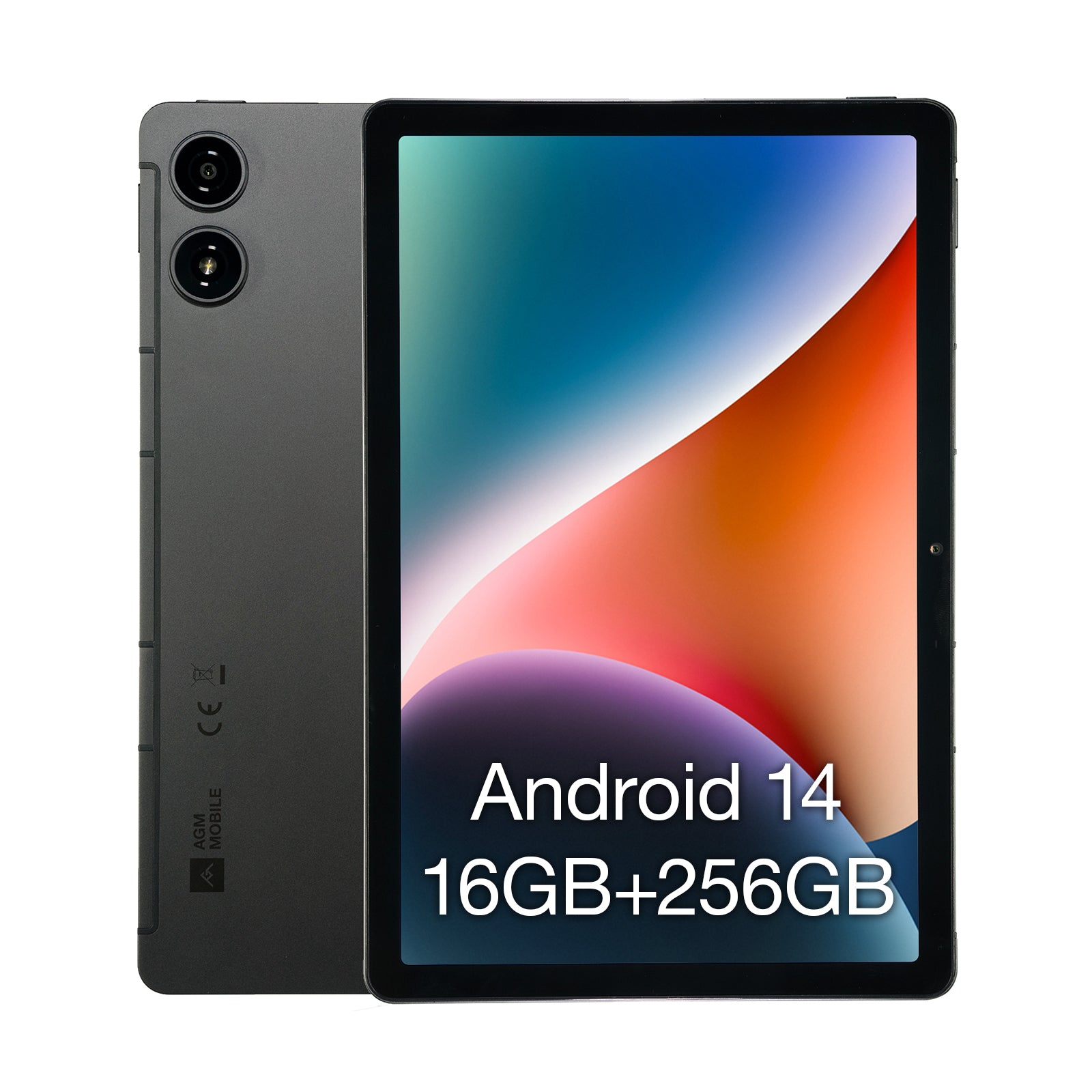
Blogs
AGM’s second tablet is larger - AGM PAD P2
AGM is a renowned brand recognized for its rugged smartphones and feature phones. Last year, the company introduced its inaugural rugged tablet, the AGM Pad P1. Following its initial debut in China, the product was subsequently announced for global markets at IFA 2023.Now, just a few months later, the brand has unveiled the successor to this tablet. The new model, officially named the AGM Pad P2, is currently being showcased at the ongoing MWC 2024 conference.
AGM Pad P2 Specifications
The new device is marketed as a light and thin tablet, measuring just 7.5mm in thickness and weighing 530g.This product features a larger 10.95-inch display, an LCD panel offering a resolution of 1920 x 1200 pixels, a 90Hz refresh rate, and 400 nits brightness level.Powering the latest tablet is a MediaTek Helio G99 SoC, paired with 8GB of RAM and 256GB of storage. It runs on Android 14.In terms of cameras, the tablet boasts a 50MP Samsung ISOCELL JN1 rear camera and an 8MP front-facing camera. It also includes quad speakers, a 3.5mm headphone jack, and a MicroSD card slot.Connectivity options are plentiful, with features such as dual SIM, 4G, dual-band WiFi, Bluetooth 5.2, GNSS, and USB Type-C.Finally, the device is equipped with a 7,850mAh battery that supports 20W charging.
Currently, it's only available for pre-order on the official website (www.agmmobile.com). During the pre-order period, you can get 10% off and the pre-order gifts (including: Stulys Pen, Protective Case and Wireless Keyboard).
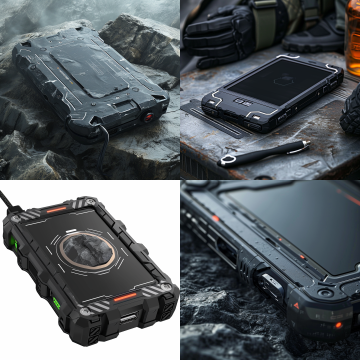
Blogs
How to Optimize Battery Life in Rugged Devices: Essential Tips and Tricks
Maximize the battery life of your rugged device with our expert tips and tricks, ensuring reliable performance in even the most demanding situations, ideal for users of AGM Mobile's rugged devices.Introduction to Battery Optimization in Rugged DevicesBattery life is a critical aspect of rugged device performance. This guide offers essential tips for optimizing the battery life of rugged devices, with a focus on AGM Mobile's products, ensuring they last longer in demanding situations.Understanding Battery UsageIdentifying Major Battery DrainsFirst, we'll discuss how to identify the major battery drains on rugged devices, including screen brightness, background applications, and location services.Battery Usage Monitoring ToolsWe'll introduce tools and settings available for monitoring battery usage, helping users understand where their battery life is going.Effective Battery Saving TechniquesAdjusting Screen SettingsReducing screen brightness and setting an appropriate screen timeout can significantly save battery life. We'll provide guidelines on optimizing these settings.Managing Connectivity FeaturesConnectivity features like Wi-Fi, Bluetooth, and GPS can drain the battery. We'll offer advice on managing these features effectively to conserve battery life.Utilizing Power Saving ModesUnderstanding Different Power Saving OptionsRugged devices often come with various power saving modes. We'll explain how these modes work and when to use them for maximum battery efficiency.Optimizing App UsageManaging Background ApplicationsWe'll discuss how to manage background applications and updates to reduce unnecessary battery consumption.Balancing App Functionality and Battery LifeThis section will focus on balancing the need for app functionality with conserving battery life, including tips on minimizing app notifications and using battery-efficient apps.Battery Maintenance for LongevityBest Practices for Battery HealthProper battery maintenance can extend its overall lifespan. We'll cover best practices for charging and maintaining the battery health of rugged devices.AGM Mobile Specific TipsTailored Advice for AGM DevicesFocusing on AGM Mobile's rugged devices, we'll provide specific tips and insights for optimizing battery life based on their unique features and specifications.Conclusion: Ensuring Sustained PerformanceWe'll conclude with a summary of the importance of optimizing and maintaining battery life in rugged devices, emphasizing how these practices contribute to sustained performance and reliability, especially for AGM Mobile device users.

Blogs
Thermal Imaging in Rugged Devices: Revolutionizing Vision and Perception
Explore the fascinating world of thermal imaging technology in rugged devices with our comprehensive guide, highlighting its applications and integration in devices like AGM Mobile's rugged smartphones and tablets.Introduction to Thermal Imaging TechnologyThermal imaging technology has become an innovative feature in rugged devices. This article will explain how thermal imaging works and its significance in the realm of rugged devices, particularly those by AGM Mobile.The Basics of Thermal ImagingUnderstanding How Thermal Imaging WorksWe'll start by explaining the science behind thermal imaging, including how it detects and translates heat signatures into visual data.Components of a Thermal Imaging SystemThis section will delve into the components that make up a thermal imaging system in a rugged device, such as infrared sensors and imaging processing units.Applications of Thermal Imaging in Rugged DevicesPractical Uses in Various IndustriesThermal imaging has a wide range of practical applications. We'll explore how it's used in different industries, such as construction, emergency services, outdoor adventures, and military operations.Advantages in Harsh and Low-Light ConditionsSpecial attention will be given to the advantages of thermal imaging in harsh environments and low-light conditions, where traditional vision is limited.AGM Mobile and Thermal ImagingIntegration in AGM Rugged DevicesFocusing on AGM Mobile, we'll discuss how they have integrated thermal imaging technology into their rugged devices, highlighting specific models that feature this technology.Real-World Scenarios and User ExperiencesThis part will include real-world scenarios and user experiences, demonstrating how AGM Mobile's rugged devices with thermal imaging have been used effectively in various settings.Understanding the Limitations of Thermal ImagingRecognizing the Technology's BoundariesWhile thermal imaging is highly beneficial, it's also important to understand its limitations. We'll discuss the boundaries of this technology, such as its range and resolution limitations.Choosing the Right Device with Thermal ImagingAssessing Your Thermal Imaging NeedsFor consumers interested in rugged devices with thermal imaging, choosing the right model involves understanding their specific needs. We'll provide guidance on assessing your requirements and selecting a device that meets them.Conclusion: The Future of Thermal Imaging in Rugged DevicesWe'll conclude with a look at the future prospects of thermal imaging technology in rugged devices, discussing potential advancements and how AGM Mobile is positioned to incorporate these innovations in their product line.

Blogs
Dustproof and Waterproof Features in Rugged Devices: A Comprehensive Guide
Gain a deep understanding of dustproof and waterproof features in rugged devices with our detailed guide, essential for choosing durable technology like AGM Mobile's rugged smartphones and tablets.Introduction to Dustproof and Waterproof FeaturesDustproof and waterproof capabilities are vital aspects of rugged devices. This article will explain these features in detail, showcasing their importance in devices designed for harsh environments, like those from AGM Mobile.Understanding Dustproof Features in Rugged DevicesWhat Does Dustproof Mean?We'll begin by defining what being dustproof entails in the context of rugged devices, including the standards and tests used to determine a device's dust resistance.Significance of Dustproof QualitiesThis section will explore the practical significance of dustproof qualities, discussing the types of environments where these features are essential and how they protect the device's internal components.Exploring Waterproof Capabilities in Rugged DevicesThe Meaning of Waterproof in DevicesNext, we'll delve into what it means for a device to be waterproof, covering the different levels of water resistance and how these are tested.Real-World Applications of Waterproof DevicesWe'll discuss the real-world applications of waterproof rugged devices, including scenarios and industries where these features are particularly beneficial.Testing and Certifying Dustproof and Waterproof FeaturesIP Rating System ExplainedA significant part of this article will explain the Ingress Protection (IP) rating system, particularly focusing on ratings relevant to dust and water resistance, such as IP67, IP68, and IP69K.Ensuring Compliance with StandardsWe'll cover how compliance with dustproof and waterproof standards is ensured, including the testing processes and certifications rugged devices undergo.Maintenance and Care for Dustproof and Waterproof DevicesProper Maintenance PracticesEven rugged devices require proper care. This section will provide tips on maintaining dustproof and waterproof features, including cleaning and care instructions to ensure these capabilities remain effective.AGM Mobile's Approach to Rugged FeaturesIncorporating Dustproof and Waterproof TechnologiesFocusing on AGM Mobile, we'll explore how they incorporate dustproof and waterproof technologies in their devices, highlighting specific models and their capabilities.Conclusion: The Importance of Dustproof and Waterproof FeaturesWe'll conclude with a summary of why dustproof and waterproof features are critical in rugged devices and how understanding these features can aid consumers in choosing the right device for their needs, emphasizing AGM Mobile's commitment to robust and durable technology.
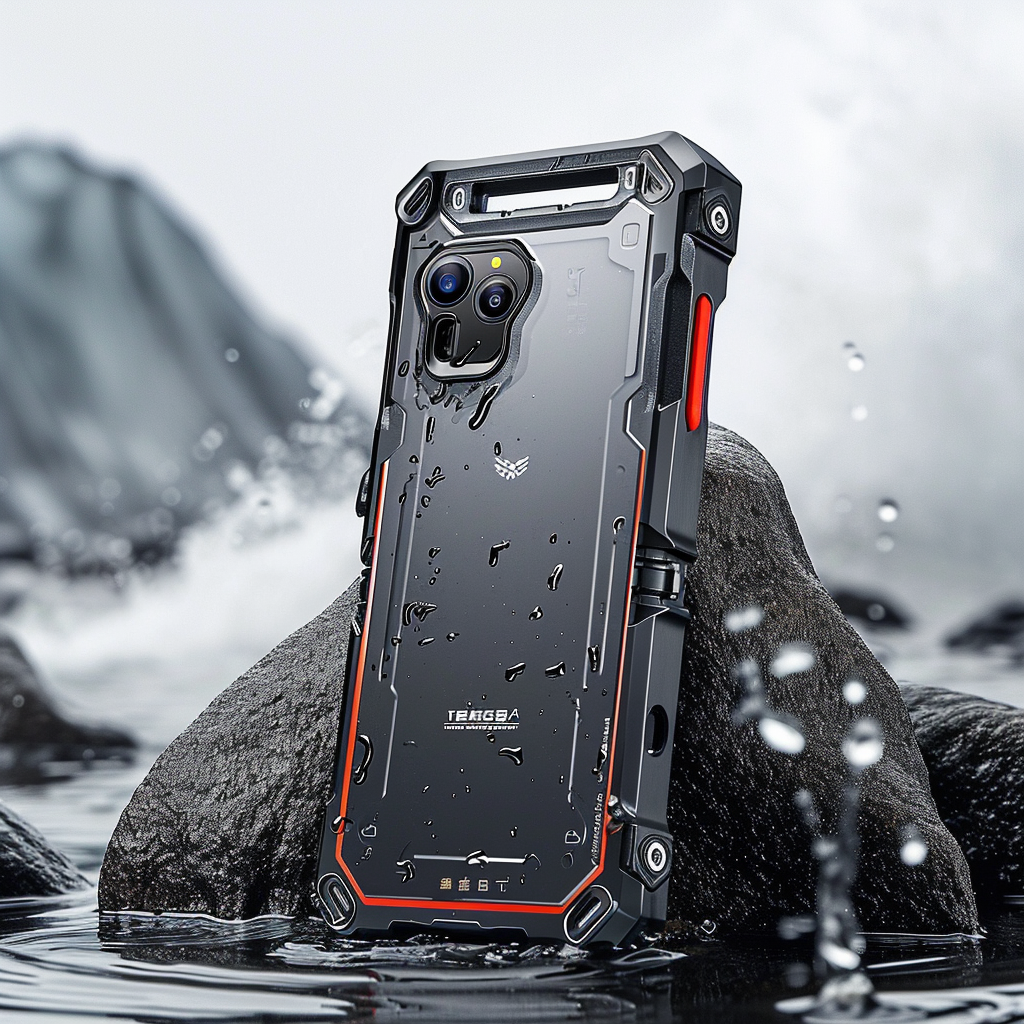
Blogs
Understanding IP68 and IP69K Ratings: The Key to Water and Dust Resistance
Uncover the meaning and importance of IP68 and IP69K ratings in rugged devices with our in-depth guide, essential for those seeking reliable water and dust-resistant technology, like AGM Mobile's offerings.Introduction to IP Ratings in Rugged DevicesIP ratings, particularly IP68 and IP69K, are pivotal in the world of rugged devices. This article will explain these ratings, diving into what they signify about a device's resistance to water and dust.What is an IP Rating?Explaining Ingress Protection RatingsWe'll start with a basic explanation of the Ingress Protection (IP) rating system, detailing what the numbers and letters represent in terms of protection levels.Decoding the IP68 RatingComprehensive Protection Against Dust and WaterIP68 is a common certification for high-end rugged devices. We'll break down this rating, explaining the level of protection against dust (the first digit '6') and water (the second digit '8').Real-World Implications of IP68 CertificationThis section will discuss practical scenarios where an IP68 rating is essential, including examples of environments and conditions where these devices can operate effectively.Understanding the IP69K RatingHigh-Pressure and High-Temperature Water ProtectionGoing beyond IP68, the IP69K rating indicates a device's ability to withstand high-pressure and high-temperature water jets. We'll explain what this means and how it's tested.Applications of IP69K-Rated DevicesWe'll cover the types of industries and activities where an IP69K rating is particularly beneficial, highlighting scenarios that demand this higher level of protection.IP Ratings and Consumer ElectronicsRelevance to Everyday DevicesWhile originating from industrial standards, IP ratings are increasingly relevant to consumer electronics. This part will discuss the importance of these ratings for everyday devices, especially those used in outdoor or challenging environments.AGM Mobile's Devices and IP RatingsFocusing on AGM Mobile, we'll explore how their rugged devices meet these IP ratings, ensuring durability and reliability for their users in various conditions.Choosing the Right IP Rating for Your NeedsAssessing Your RequirementsSelecting a device with the appropriate IP rating depends on individual needs and environmental conditions. We'll provide guidance on assessing your requirements and choosing a device with the right IP rating.Conclusion: The Significance of IP Ratings in Rugged Device SelectionUnderstanding IP ratings is key to selecting a rugged device that suits your needs. We'll conclude with a summary of the importance of IP68 and IP69K ratings and their role in ensuring device longevity and reliability, with a nod to AGM's range of rugged products.
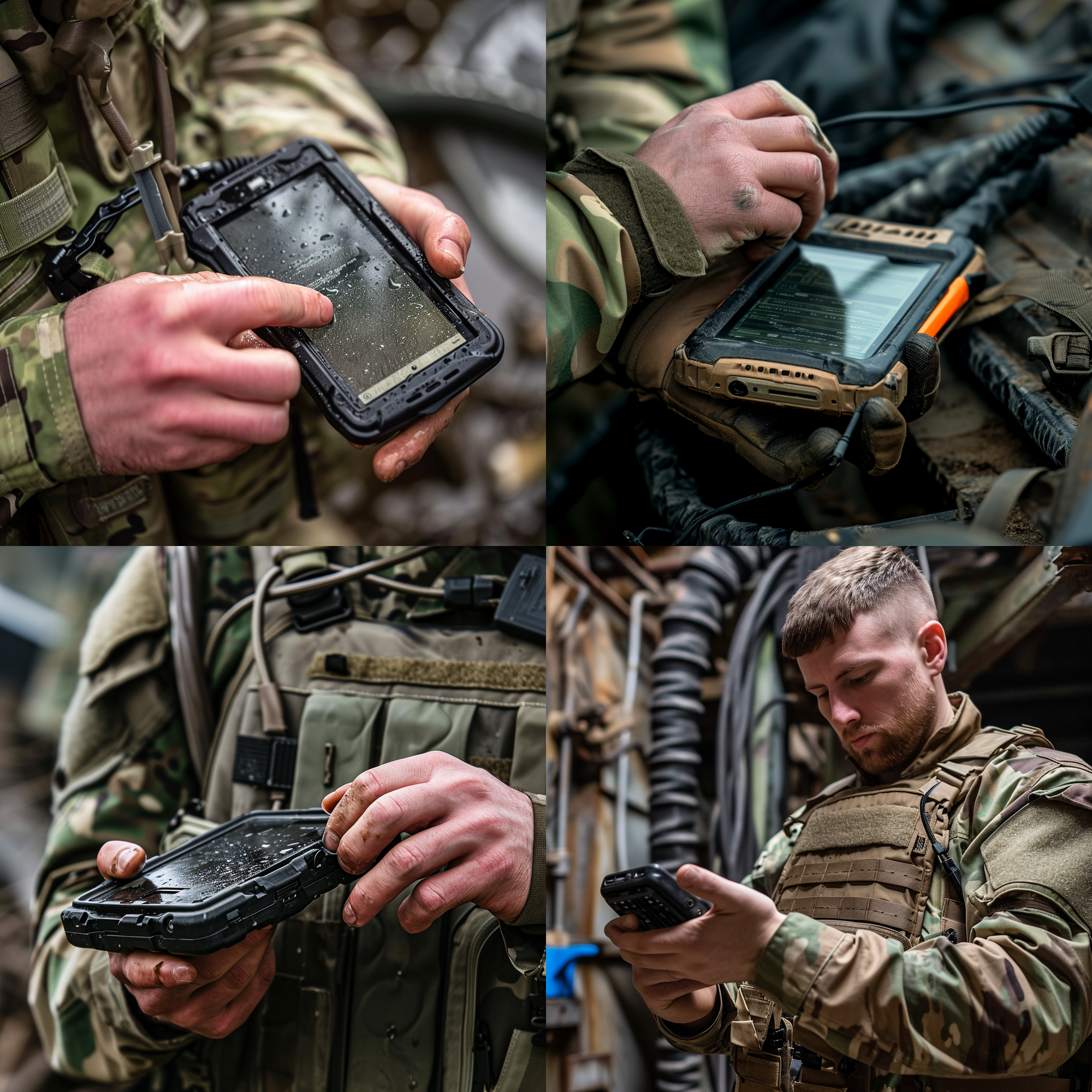
Blogs
A Deep Dive into MIL-STD-810H: Understanding Its Rigorous Testing for Rugged Devices
Explore the rigorous MIL-STD-810H standard in detail with our comprehensive guide, understanding how it certifies the durability of rugged devices, including those by AGM Mobile.Introduction to MIL-STD-810H TestingMIL-STD-810H is a crucial standard for assessing the ruggedness of devices. This article provides a detailed look at this military standard, explaining its significance and the various tests it includes for rugged devices like AGM's.The Evolution of MIL-STD-810From MIL-STD-810 to MIL-STD-810HWe'll start with a brief history of the MIL-STD-810 standard, tracing its evolution to the current MIL-STD-810H, highlighting the changes and updates that have been made over the years.Key Tests in MIL-STD-810HBreaking Down the TestsMIL-STD-810H comprises numerous tests, each designed to simulate different environmental conditions. This section will break down key tests, such as temperature extremes, humidity, shock, vibration, and more.What These Tests SimulateEach test in the MIL-STD-810H simulates specific environmental conditions. We'll explain what these tests simulate and why they are critical for assessing a device's ruggedness.MIL-STD-810H and Consumer DevicesApplication to Consumer ElectronicsWhile MIL-STD-810H is a military standard, its application extends to consumer electronics. This part will discuss how these rigorous tests are relevant to consumer devices, particularly those used in extreme conditions.AGM Mobile and MIL-STD-810H CertificationFocusing on AGM Mobile's products, we'll explore how their devices meet MIL-STD-810H standards, ensuring durability and reliability for their users.Understanding Test Reports and CertificationsInterpreting MIL-STD-810H ComplianceUnderstanding MIL-STD-810H compliance can be complex. We'll guide readers on how to interpret test reports and certifications, understanding what level of ruggedness they indicate.The Importance of MIL-STD-810H in Various IndustriesRugged Devices in Professional SettingsDifferent industries have varying needs for rugged devices. This section will highlight the importance of MIL-STD-810H in industries like construction, military, outdoor adventure, and more.Conclusion: The Role of MIL-STD-810H in Rugged Device SelectionChoosing a rugged device often depends on understanding its durability certifications. We'll conclude with a summary of why MIL-STD-810H is a key standard to consider and how it helps in selecting the right rugged device, with a nod to AGM's range of products.
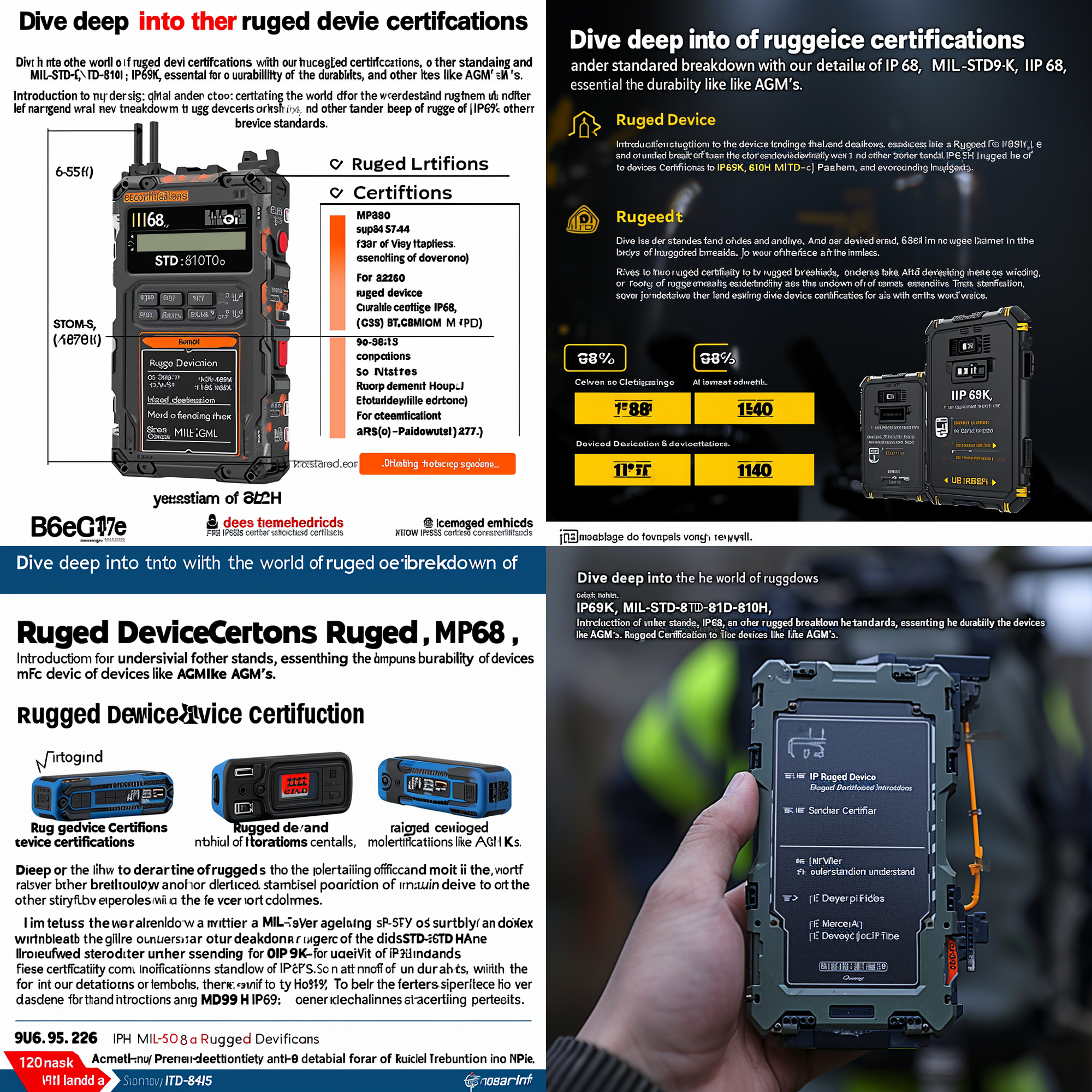
Blogs
Decoding Ruggedness: In-Depth Look at IP68, IP69K, MIL-STD-810H, and More
Dive deep into the world of rugged device certifications with our detailed breakdown of IP68, IP69K, MIL-STD-810H, and other standards, essential for understanding the durability of devices like AGM's.Introduction to Rugged Device CertificationsRugged device certifications like IP68, IP69K, and MIL-STD-810H are crucial indicators of durability. This article provides an in-depth analysis of these standards, helping you understand what they signify for devices such as AGM's rugged smartphones and tablets.IP68 Certification ExplainedDefinition and CriteriaIP68 is a rating granted by the International Electrotechnical Commission. We'll define what IP68 stands for, including the specifics of the '6' and '8' digits in terms of protection against dust and water.Practical Implications for Device UseThis section will cover the practical implications of the IP68 rating for everyday use, including limitations and the types of environments where these devices excel.Understanding IP69K CertificationHigh-Pressure Water ResistanceIP69K is a step above IP68, specifically designed to withstand high-pressure and high-temperature water jets. We'll delve into what this certification tests and what it means for the durability of a device.Use Cases for IP69K DevicesWe'll discuss the typical use cases and industries where IP69K certification is particularly important, such as in construction and manufacturing environments.MIL-STD-810H: Military Standard TestingOverview of MIL-STD-810HMIL-STD-810H is a series of tests developed by the U.S. military to simulate equipment use in various environmental conditions. This part will break down what these tests entail and the aspects of ruggedness they cover.How MIL-STD-810H Applies to Consumer DevicesWe'll explain how the MIL-STD-810H standards, though military in origin, apply to consumer devices and what passing these tests means in terms of device resilience.Additional Rugged Features: Shockproof and DropproofImpact Resistance ExplainedShockproof and dropproof features are key to rugged devices. We'll discuss the technology behind impact resistance and how it's tested.Real-World Benefits of Shockproof and Dropproof DevicesThis section will explore the real-world benefits of using a device that is shockproof and dropproof, including user scenarios and environments.Dustproof Qualities in Rugged DevicesWhat Does Dustproof Mean?We'll clarify what being dustproof entails for a rugged device and the testing criteria used to determine this capability.Significance in Various EnvironmentsUnderstanding where dustproof features are most beneficial, this part will highlight specific environments and situations where a dustproof device is essential.Conclusion: The Significance of Rugged CertificationsWe'll wrap up with a summary of how understanding these certifications can help consumers make informed decisions when selecting a rugged device, emphasizing the strengths of AGM's product range in meeting these rigorous standards.
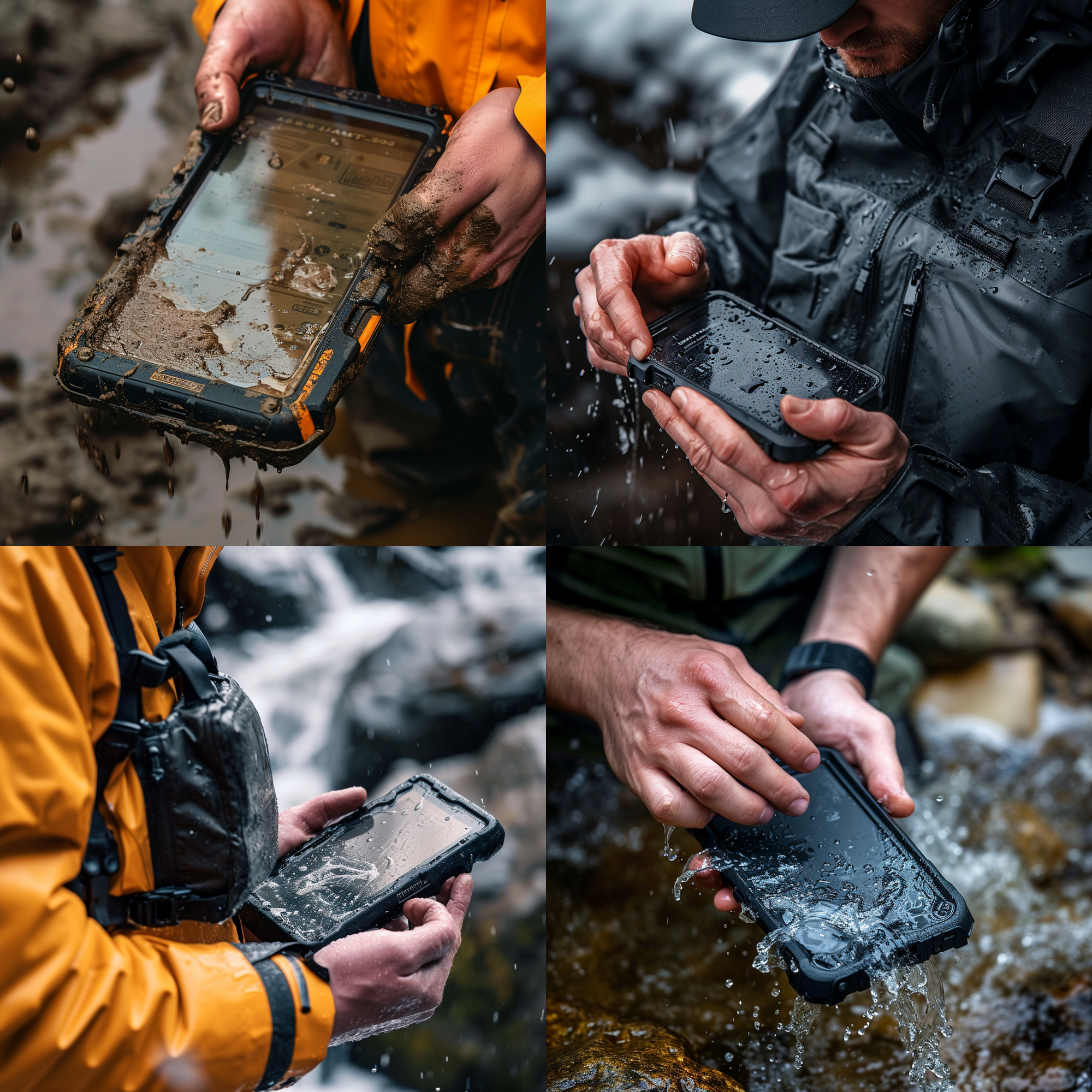
Blogs
Understanding Rugged Device Certifications: IP68, IP69K, MIL-STD-810H, and Beyond
Demystify rugged device certifications like IP68, IP69K, and MIL-STD-810H with our detailed guide, explaining what these standards mean for the durability of devices like AGM's rugged smartphones and tablets.Introduction to Rugged Device CertificationsIn the realm of rugged devices, certifications like IP68, IP69K, and MIL-STD-810H are badges of honor. This article will explain these certifications, helping you understand what to look for in a rugged device, with a focus on AGM's range of products.What Does IP68 Mean?Understanding Ingress Protection RatingsIP68 is a common certification for rugged devices. We'll break down what this rating means, covering its implications for water and dust resistance.Real-World Applications of IP68 DevicesThis section will discuss the practical applications of having an IP68-certified device, especially in outdoor and industrial environments.The Significance of IP69K in Rugged DevicesHigh-Pressure and Temperature Water JetsUnlike IP68, IP69K indicates protection against high-pressure water jets and high temperatures. We'll explore the importance of this certification and where it's most applicable.MIL-STD-810H: The Ultimate Rugged CertificationUnderstanding Military Standard TestingMIL-STD-810H is a series of tests designed to assess equipment durability in extreme environmental conditions. This part will delve into what these tests entail and what passing them means for a device.AGM Devices and MIL-STD-810HFocusing on AGM's products, we'll highlight how their rugged devices meet or exceed these military standards, ensuring reliability in the toughest conditions.Other Important Rugged FeaturesShockproof and Dropproof QualitiesBeyond certifications, features like shockproof and dropproof capabilities are crucial. We'll discuss the technology behind these features and their importance.Custom Rugged Features in AGM DevicesExploring AGM's unique rugged features, this section will provide insight into the specialized technologies they use to enhance durability and performance.Choosing the Right Rugged DeviceAssessing Your Needs and EnvironmentChoosing the right rugged device depends on your specific needs and environment. We'll provide guidance on selecting the most suitable device based on various rugged certifications and features.Conclusion: The Importance of Rugged CertificationsUnderstanding rugged certifications helps in choosing a device that can withstand your lifestyle or work environment. We'll conclude by emphasizing the importance of these certifications and how AGM Mobile's products stand up to these rigorous standards.
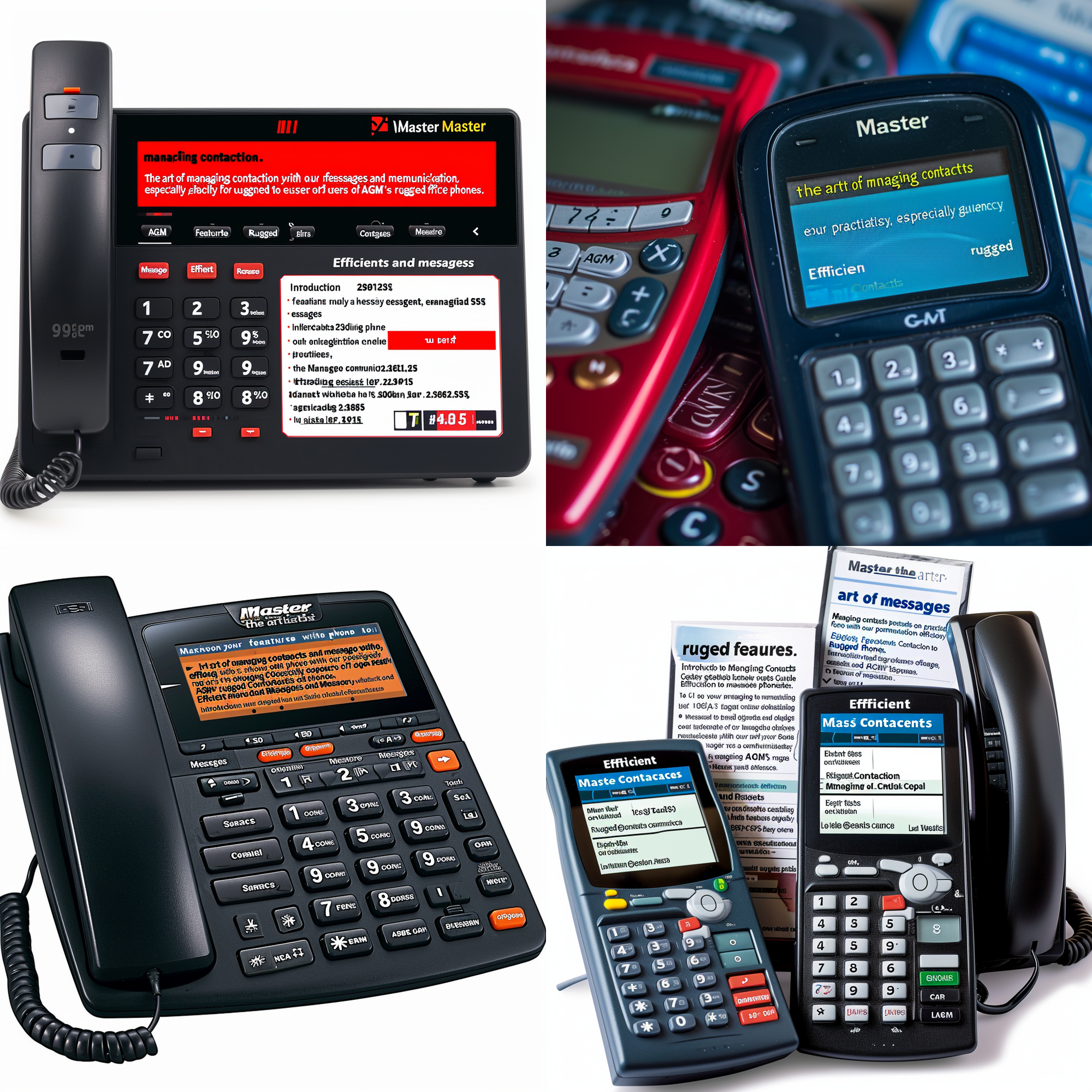
Blogs
Effective Management of Contacts and Messages on Your Feature Phone
Master the art of managing contacts and messages on your feature phone with our practical guide, designed to enhance communication efficiency, especially for users of AGM's rugged feature phones.Introduction to Managing Contacts and MessagesEfficient management of contacts and messages is crucial for feature phone users. This guide provides straightforward strategies for organizing contacts and handling messages on your feature phone, with additional tips for AGM device users.Managing Your Contact ListAdding and Editing ContactsWe'll start with the basics of adding and editing contacts on your feature phone, covering the steps to input and modify contact details.Organizing Contacts EfficientlyKeeping your contact list organized is key. This section will provide tips on grouping contacts, using speed dial, and other organization strategies.Mastering Message ManagementSending and Receiving MessagesFeature phones may not have advanced messaging apps, but they excel in basic SMS communication. We'll cover efficient ways to send and receive text messages.Organizing Your InboxAn organized inbox helps you keep track of your communications. This part will offer advice on managing your message inbox, including deleting old messages and organizing conversations.Backup and Transfer of Contacts and MessagesCreating Backups of Your ContactsLosing your contact list can be frustrating. We'll guide users on how to back up their contacts, ensuring they're not lost if the phone is damaged or replaced.Transferring Contacts and Messages to a New PhoneFor users upgrading to a new phone or switching devices, we'll provide steps for transferring contacts and messages from one feature phone to another.Privacy and Security in CommunicationEnsuring the Security of Your Contacts and MessagesPrivacy and security are important, even on feature phones. This section will discuss basic security practices to protect your contacts and messages.Special Features on AGM Feature PhonesUtilizing AGM's Unique Contact and Message FeaturesAGM's feature phones may have unique capabilities for contact and message management. We'll explore these features and provide instructions on how to use them effectively.Conclusion: Streamlining Communication on Your Feature PhoneEfficient management of contacts and messages can greatly enhance the utility of your feature phone. We'll conclude with a summary of best practices to streamline communication and maintain an organized approach to your contacts and messages.



